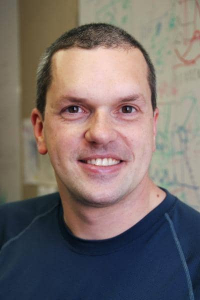Iron induces chronic heart failure in half of heart attack survivors, according to landmark study
 Professor Louis Bouchard is part of a team of researchers who have identified that iron drives the formation of fatty tissue in the heart and leads to chronic heart failure in about fifty percent of heart attack survivors.
Professor Louis Bouchard is part of a team of researchers who have identified that iron drives the formation of fatty tissue in the heart and leads to chronic heart failure in about fifty percent of heart attack survivors.
The sudden blockage of arteries that supply the heart muscle contributes to millions of heart attacks around the world. Half of the survivors go on to develop chronic heart failure (CHF) and die within a 5-year period; however, why some patients accelerate towards CHF while others do not remain unclear.
A multi-institution study led by Professor Rohan Dharmakumar of Indiana University School (IU) of Medicine including collaborator Professor Louis Bouchard at UCLA, has identified that iron drives the formation of fatty tissue in the heart and leads to chronic heart failure in about fifty percent of heart attack survivors. The discovery, published in Nature Communications on October 27, 2022, paves the way for treatments that have the potential to prevent heart failure in nearly half a million people a year in the United States, and many millions more worldwide.
“For the first time, we have identified the root cause of chronic heart failure following a heart attack,” Dharmakumar said.
Dharmakumar is executive director of IU’s Krannert Cardiovascular Research Center and associate director for research at the Cardiovascular Institute, a joint enterprise between IU School of Medicine and IU Health.
“While advances across populations have made survival after a heart attack possible for most, too many survivors suffer long-term complications like heart failure,” said Dr. Subha Raman, MD, who is physician director of the Cardiovascular Institute. “Dr. Dharmakumar’s breakthrough science illuminates who is at risk and why and points to an effective way to prevent these complications.”
“This study clearly identifies iron as a factor driving fat deposition within the damaged heart tissue. In the process of identifying the driving factor, the study demonstrates that iron chelators reduce iron content within the heart tissue. This suggests a potential therapeutic route to combat CHF. Interestingly, the intracellular ferric iron chelator is already FDA-approved,” said Bouchard, a professor of chemistry at UCLA. “The iron chelator therapy directs the heart towards positive anatomical and functional recovery in the period following the heart attack.”
The multi-million-dollar study, which involved collaborators from institutions in the United States and Canada, followed large animal models over six months. It found that in heart attacks that result in bleeding within the heart muscle—which is about half of heart attacks—scar tissue is slowly replaced by fat. Fatty tissue cannot contract and does not provide strength to contract against, and therefore can’t push blood from the heart effectively. This is what leads to heart failure and eventually to death in many survivors of hemorrhagic heart attacks, Dharmakumar said.
“Using noninvasive imaging, histology and molecular biology techniques, and various other technologies, we have shown that iron from red blood cells is what drives this process,” he explained. “When we removed the iron, we reduced the amount of fat in the heart muscle. This finding establishes a pathway for clinical investigations to remedy or mitigate the effects associated with iron in hemorrhagic myocardial infarction patients.”
Dharmakumar’s team is currently testing iron chelation therapy to do just that in a just-launched clinical trial.
“Thanks to a clinical trial underway being led by his team at Indiana University, I’m excited to see this treatment improve the lives of millions of heart attack survivors worldwide,” said Raman.
In collaboration with the Bouchard lab at UCLA, the team is studying the potential for point-of-care, early diagnosis and prevention techniques, that are based on the new findings.
***
Cokic, I., Chan, S.F., Guan, X. et al. Intramyocardial hemorrhage drives fatty degeneration of infarcted myocardium. Nat Commun 13, 6394 (2022). https://doi.org/10.1038/s41467-022-33776-x
This article originally appeared in the Indiana University School of Medicine Newsroom.








